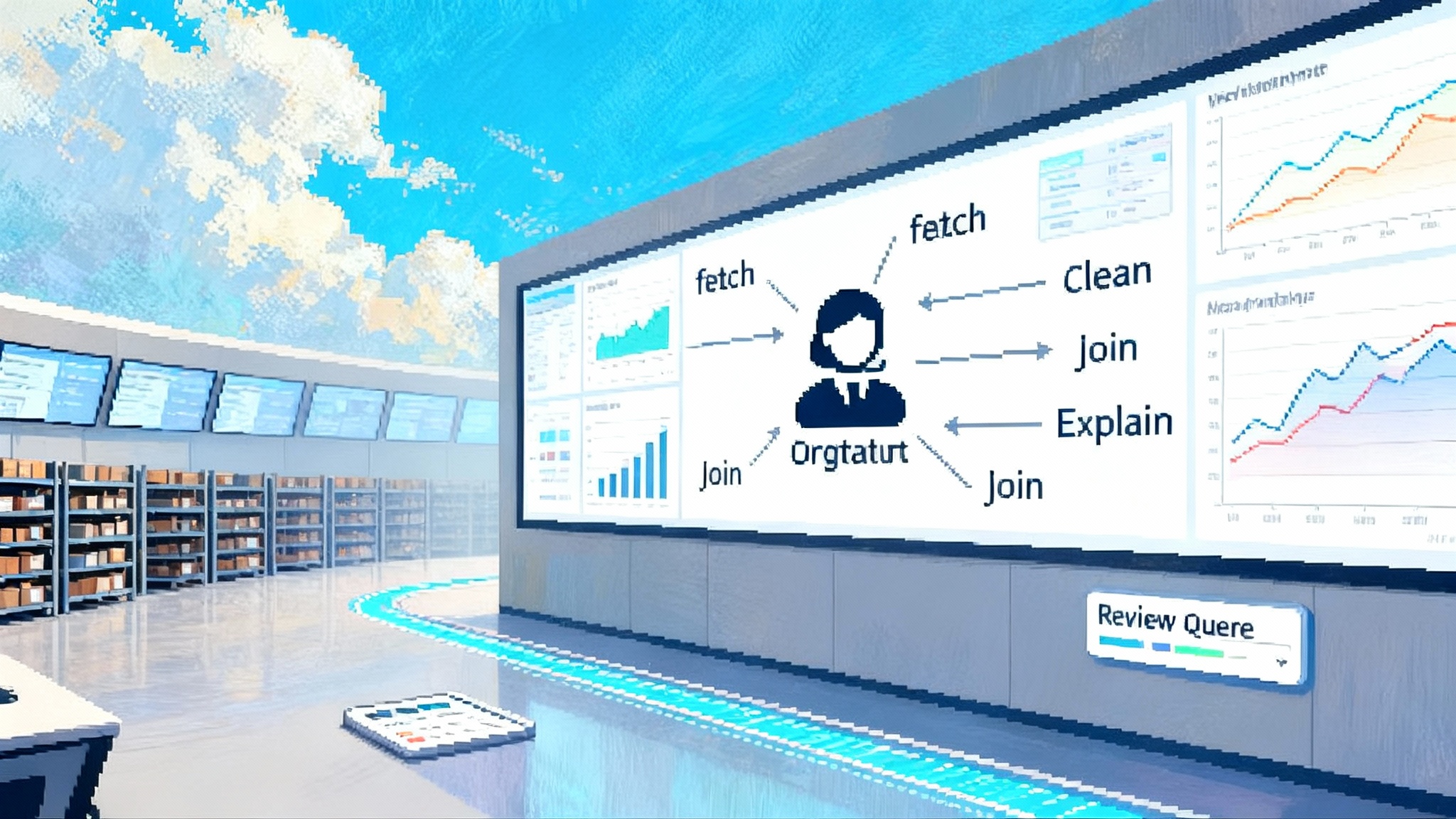Edge AI Observability Turns Shadow AI Into a Productivity Engine
Most AI activity hides inside everyday tools, leaving IT blind to risk and missed gains. Edge observability flips governance from brake to throttle by detecting prompts on-device, coaching in real time, and proving measurable productivity lift.

The day AI governance flipped from brake to throttle
On September 10, 2025, Lanai announced an edge-based AI observability agent and shared a striking data point: 89 percent of enterprise AI use is invisible to IT and security teams. That claim matches what many leaders feel every week. Employees rely on Claude, Copilot, Salesforce Einstein, and a growing list of embedded features long before procurement, security, or legal gets a look. The Lanai launch announcement puts numbers to that gap and proposes a way out.
If the first phase of enterprise AI was pilots and policy PDFs, the next phase is visibility that is fast, fine grained, and privacy preserving. That is what turns governance from a compliance checkbox into a real productivity engine.
Why network-only monitoring cannot see modern AI use
Most security programs grew up on the network. They watch domains, proxies, VPNs, and data egress. Generative AI breaks that lens in five ways:
- Embedded AI hides inside trusted apps. Sales teams draft emails with Einstein in Salesforce, designers use generative fill in Figma, and engineers accept Copilot suggestions in the IDE. Network tools may see only a familiar domain, not the prompts and context that matter.
- Personal accounts look like normal traffic. A developer pasting proprietary code into a personal chatbot session and an approved enterprise session can look identical on the wire. Without on-device context, you cannot tell which is which.
- Encryption and modern protocols reduce inspectability. TLS 1.3 and QUIC keep traffic secure, which also keeps inspection blind to the highest risk content. Pre-encryption visibility on the endpoint restores the missing context.
- Feature velocity outruns static controls. Vendors ship new AI features constantly, bypassing blocklists and sanctioned tool catalogs. Model-driven detection at the edge sees behavior patterns, not just domain names.
- Governance needs real-time coaching, not only logs. A prompt that contains customer identifiers should trigger a nudge or a redaction before data leaves the device. That decision must happen locally, at the moment of interaction.
Edge agents change the frame. By running lightweight detectors on employee devices, they can identify AI interactions wherever they occur, in a browser, desktop app, IDE, or a new feature that shipped yesterday. Crucially, they can do it with strong privacy controls because analysis happens locally and only policy signals or minimal telemetry are sent upstream.
What an edge AI observability agent actually does
Think of three layers working together on the device:
- Interaction sensing. Hooks at the browser and application layers detect patterns consistent with AI prompts and completions, for example a user pasting text into an input with a known AI selector, or an extension calling an AI API.
- Local classification. Small models categorize the interaction, purpose, and sensitivity, for example summarize meeting notes, generate code suggestions, or draft a contract, with data class hints such as customer identifiers, regulated health data, or source code.
- Real-time policy. Based on role, data class, and tool posture, the agent decides to allow, coach, redact, or block. Coaching can include a short, contextual nudge, approved alternatives, or automatic removal of sensitive fields.
This design yields benefits network-only approaches cannot deliver:
- Prompt-level visibility across any app, even when the AI feature arrives tomorrow.
- Account awareness that distinguishes personal from enterprise sessions.
- Sub-second guardrails that prevent data leakage without breaking flow.
- Data minimization by default, since raw prompts need not leave the device.
KPIs leaders should track to scale safely
Executives do not need a bloated dashboard. They need a tight set of metrics that connect risk control to productivity lift. These are pragmatic enough for weekly reviews and strategic enough to guide budgets and vendor choices.
- Visibility coverage. Percentage of AI interactions observed out of estimated total. Target 95 percent within 60 days of rollout. Use sampling, app integrations, and user surveys to calibrate the denominator.
- Sensitive data exposure rate. Incidents per 1,000 prompts where restricted data classes appear. Break down by customer data, source code, financials, and regulated health data. Trend should drop by 50 percent in the first quarter after coaching is enabled.
- Personal account usage. Share of AI interactions tied to non-enterprise accounts. Establish a baseline, then drive a 60 percent reduction through enterprise licensing and just-in-time access.
- Embedded AI coverage. Share of top 25 SaaS applications where embedded AI usage is detected, classified, and governed. Target 100 percent coverage for core systems such as Salesforce, Microsoft 365, Google Workspace, ServiceNow, Adobe, and Atlassian.
- Policy action mix. Ratio of allow, coach, and block actions. Healthy programs show majority allow, meaningful coaching, and small, decreasing blocks. A 70:25:5 allow to coach to block split indicates friction is under control.
- Guardrail latency. Median time from user action to policy decision. Sub 200 ms preserves flow; anything above 500 ms will be felt by power users.
- False positive rate. Percentage of coached or blocked interactions later judged acceptable. Keep this under 5 percent, or your program will lose trust.
- Coaching success rate. Percentage of coached interactions that convert to compliant behavior within 14 days. Aim for 75 percent as education replaces blocks.
- Time to approval. Median time to evaluate and approve a new AI tool or feature. With observability and a standard control check, this should be under 10 business days.
- Productivity lift. Team-specific metrics tied to augmentation, for example developer time to PR merge, incident response mean time to resolve, sales email reply rate, and analyst report cycle time. Track changes for cohorts that receive coaching and approved tools.
- Cost to protect per employee. All-in security and governance costs divided by monitored employees. Use this to compare agent options and defend budget.
- Residual risk index. Composite score that weights sensitive data exposure, personal account usage, and false positives. Report this alongside business lift to the board.
To align with standard risk language and audit expectations, map these KPIs to govern, map, measure, and manage functions in the NIST AI Risk Management Framework. The NIST AI RMF overview provides a vocabulary boards and auditors already understand.
From visibility to a control plane for agentic work
Observability is step one. The real prize is a control plane that coordinates how agentic work happens across tools, accounts, and data sources. In practice, that looks like this:
- Unified event model. Every AI interaction becomes a typed event that includes tool, account, purpose, sensitivity hints, and outcome. Events are standardized across Claude, Copilot, Salesforce Einstein, and embedded features in SaaS platforms.
- Policy engine with business context. Policies consider role, team objectives, data domains, and regulatory zones. A sales manager in EMEA can request a different enrichment policy than a healthcare analyst in the United States, and both remain compliant.
- Action adapters. The plane connects to approvals, data loss prevention, secrets managers, and identity providers. It can auto-provision an enterprise account when personal usage is detected, or move a prolific user to an advanced tier where their work delivers measurable impact.
- Observed to managed loop. High performing shadow workflows move from observed to sanctioned. The plane builds a case with measured productivity, risk profile, and cost, then recommends an adoption decision with the right guardrails.
- Attribution and chargeback. Because every approved agent workflow has an owner and purpose, usage can be allocated to business units. This reduces tool sprawl, funds what works, and cuts what does not.
For leaders building agent programs, it helps to borrow patterns from productized agents already in the wild. Our deep dive into enterprise-grade agents in Inside Algolia Agent Studio shows how telemetry, policy, and workflow ownership come together in production.
Why on-device control beats centralized pipes
Some teams ask whether routing all AI traffic through a central proxy or model gateway solves the same problem. Centralization helps with model standardization and logging, but it misses key realities of enterprise AI:
- Not all AI goes through your gateway. Embedded features call third party endpoints under the hood. Employees also use native apps and extensions that bypass proxies.
- The context that matters lives on the endpoint. Was the prompt copied from a sensitive document, is the user on a personal account, does the prompt include regulated fields. These details are visible pre-encryption and pre-API.
- Latency is a design constraint. Coaching works when it is instant and local. A round trip to a central service invites workarounds, like screenshots or copy and paste to avoid controls.
- Privacy and minimization are easier locally. You can compute sensitivity and policy decisions on device, and only emit policy results rather than prompts.
The right architecture is hybrid. Keep a central brain for policy, analytics, and model governance, but place the eyes and reflexes on the edge. That is how observability becomes a user-centered experience, not just a log archive.
A 90 day rollout plan that balances speed and trust
- Days 1 to 15. Instrument a representative cohort across roles and regions. Turn on detect only. Establish baselines for visibility coverage, personal account usage, sensitive data exposure, and embedded AI coverage. Publish an internal FAQ on what the agent collects and what it does not.
- Days 16 to 30. Enable coaching for the highest risk patterns, for example pasting customer data into personal chatbots or uploading regulated data to non-compliant features. Start a champions program with developers, sales, and analysts who already use AI heavily.
- Days 31 to 60. Stand up the control plane patterns. Connect identity, data classification, and approval workflows. Begin promoting proven shadow workflows into sanctioned ones with enterprise accounts and standard prompts. Track policy action mix and guardrail latency.
- Days 61 to 90. Expand coverage to all knowledge workers. Integrate with ticketing and analytics so managers can see lift by team. Publish a quarterly governance report with KPI trends, quick wins, and a plan to reduce residual risk.
This is also the window to align with business intelligence and decision support. As agentic analytics matures, platforms like Aidnn show how to connect outcomes to action. For a broader look at this shift, see Agentic BI arrives with Aidnn, which explains how agentic patterns reduce dashboard sprawl and speed up insight-to-action loops.
Safeguards that keep the program trusted
- Privacy by design. Process prompts locally, redact sensitive fields before any telemetry leaves the device, and default to aggregation whenever possible.
- Transparency to users. Let employees see what the agent detected about their own interactions and why a policy applied. Offer quick appeal paths for false positives.
- Role based policies. Give teams room to experiment in sandboxes, with strict policies at the edges of regulated data and customer impact.
- Vendor and model posture checks. Trust but verify. Track the data handling practices and certifications of third party AI tools, and adjust policies as posture changes.
- Continuous tuning. Review false positives weekly with champions. Update detectors for new embedded features and adjust coaching language to reduce friction.
If your organization is also building an internal marketplace of approved AI tools, connect the observability plane to that catalog. Observed usage can feed real adoption decisions, while pricing and permissions flow the other direction. For how marketplaces shape adoption, our take on ProRata AI marketplace insights explores the dynamics of curation, pricing, and governance.
What this unlocks for leaders
Once you can see and shape AI interactions at the edge, two outcomes follow. First, risk drops because you catch sensitive data before it moves. Second, productivity compounds because you promote the agentic workflows that actually move the needle. You no longer guess which tools matter. You can prove it.
- CISOs gain a defensible narrative for boards and auditors, backed by measurable reductions in exposure and false positives.
- CIOs get a practical path to standardize and scale what already works, without slowing teams to a crawl.
- Business leaders get attribution, chargeback, and a control plane that aligns incentives, cuts spend on redundant tools, and directs investment to the teams that turn AI into customer value.
The era of shadow AI is not a crisis to stamp out. It is a discovery engine waiting for governance. Put observability on the edge, adopt KPIs that tie safety to outcomes, and build the control plane that lets Claude, Copilot, Salesforce Einstein, and the next thousand embedded AI features work for you.
Summary for action
- Deploy an edge agent to sense interactions, classify locally, and enforce policy in real time.
- Track a compact KPI set that links controls to productivity, including visibility coverage, exposure rate, and policy action mix.
- Stand up a control plane that standardizes events, policies, and adapters across tools, then move high performing shadow workflows into sanctioned patterns.
- Choose a hybrid architecture with a central brain and edge reflexes, and commit to privacy by design.
- Publish results quarterly to maintain trust and funding. Map outcomes to the NIST AI RMF so your progress speaks the language of risk and governance.
With that playbook, edge AI observability does more than find hidden usage. It turns shadow AI into a managed, measurable productivity engine that compounds value over time.


